EVA vs PUR: Which Glue is Better for Perfect Bound Books?
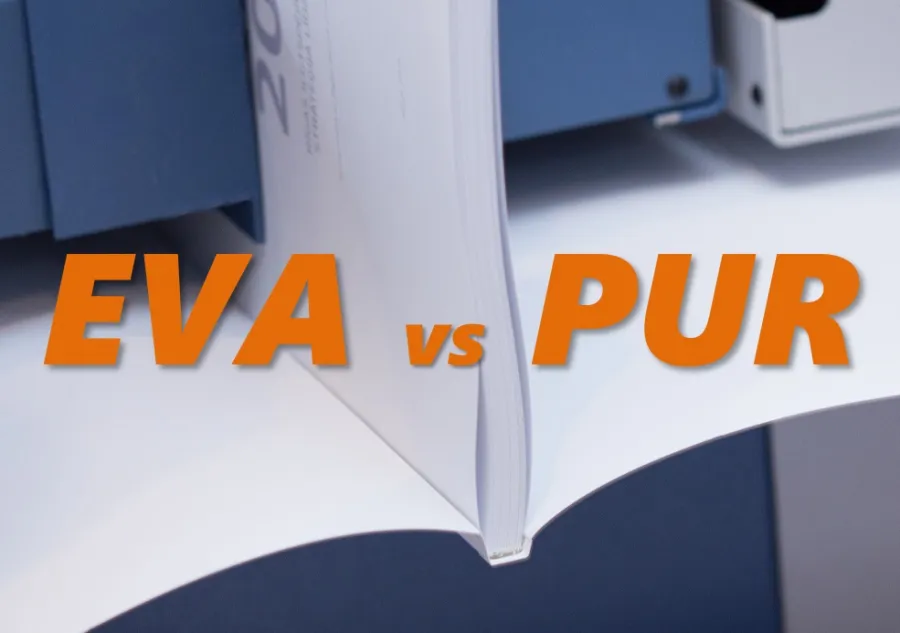
estimated reading time: 6 minutes
Perfect Binding: Understanding the Difference between PUR and EVA Glue
Perfect Binding is an extremely popular bookbinding method. This
softcover binding style is used to create books, manuals, catalogs, magazines,
and other multi-page documents. Books made with the perfect binding method
exhibit a very sleek and professional appearance.
Perfect binding works best for books that have medium to
high page counts. Also, unlike other softcover binding methods, perfect binding
yields a square spine. This allows the spine to display printed information,
such as the book's title, author name, volume number, and so on.
The perfect binding process uses a hot melt glue to secure a
book's printed pages within a wraparound cover. The cover is made from a heavier
cardstock that has been creased and folded to fit snugly around the block of
pages.
Once the pages have been affixed within the cover, the glue is
allowed to cure. After the bond has fully set, the book is neatly trimmed to
give it clean "perfect" edges…hence the name "Perfect Binding."
In today's marketplace, there are two primary types of glue being
used to produce perfect bound books - EVA and PUR. Below is an explanation of
each glue type so you can see how they differ.
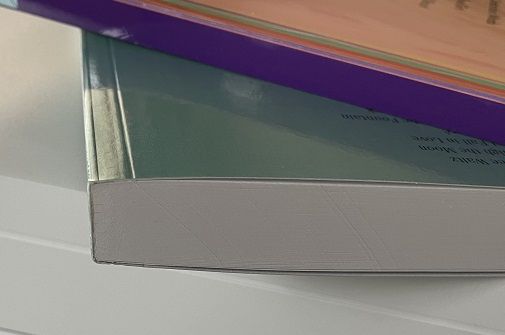
What is EVA glue?
EVA is a co-polymer of Ethylene and Vinyl Acetate. The Ethylene
gives the glue flexibility and impact resistance. The Vinyl Acetate improves the
glue's adhesion and toughness.
EVA glue was first introduced in 1940. By the 1960's, it was
being widely used for book binding. Its long tenure is the reason many consider
EVA to be the traditional glue for perfect bound books.
EVA is a general purpose hot-melt adhesive that bonds securely
to uncoated paper stocks. However, it can sometimes have issues bonding to some
coated stocks, especially slicker surfaces like gloss UV or laminates.
Also, because it is a thermoplastic, EVA glue becomes molten
when heated and hardens again when it cools to room temperature. This provides a
book manufacturer with the ability to reheat batches of glue that may have
hardened, thus minimizing waste. However, the fact that EVA glue can be made
soft again by reheating, also means that the pages can become loose if a completed
book is ever subject to higher than normal temperatures.
Regarding the curing process of EVA, the glue cures primarily
by losing thermal energy. In other words, it re-solidifies as it cools, locking
the adhesive in place. There is no chemical reaction during the curing process like
there is with epoxies and polyurethanes. This means EVA cures faster than
chemical-based adhesives. The quicker cooling rate of EVA allows perfect bound
books to progress to the trimming operation soon after gluing.
Many book printing companies still use EVA glue because it is
offers a moderately good mix of strength, flexibility, and economy. Though EVA
is not as strong or flexible as PUR, it does offer book manufacturers a lower
cost point. Plus, as mentioned, any EVA glue left over from a production run
can be reheated multiple times, which reduces the potential for waste.
What is PUR glue?
PUR is a Polyurethane Reactive adhesive. Polyurethane refers
to a string of polymers linked together by urethane bonds. Reactive means the
adhesive acquires its strength from undergoing a chemical reaction.
PUR's chemical reaction is initiated by moisture. This
moisture is drawn from the natural humidity in the surrounding air as well as
from the materials being glued. The moisture triggers small molecules within
the adhesive to form larger chains of molecules called polymers.
This polymerization process is what gives PUR glue its
superior strength and adhesion. Whereas EVA glue might cure within minutes, PUR
requires hours to reach full strength. This is because the linking of molecules
continues until the glue is fully cured.
Compared to EVA, PUR glue might be considered a relative
newcomer to the world of book binding. However, PUR has been a popular binding
glue for several decades. As such, it is a time-tested and proven adhesive.
Unlike EVA, any leftover PUR glue cannot be reheated.
However, this is a good feature for consumers because it means the pages will
not loosen should a completed book encounter a hotter than normal environment.
PUR is actually superior to EVA in many ways. Below is a
list of reasons why you should choose PUR glue for all your perfect bound book
projects…
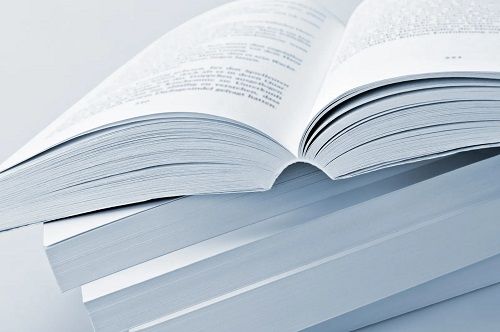
Why PUR is better than EVA for Perfect Binding
Greater Bonding Strength
PUR is a "reactive" adhesive, formulated to
chemically react with moisture drawn from the surrounding environment. The chemical
reaction of PUR glue creates a molecular bond with the paper fibers, providing
a stronger and more durable adhesion than EVA glue. This ensures that the book's
pages and cover are securely bound and will remain intact over time.
Superior Flexibility
Unlike EVA, which can become brittle with age, PUR maintains
its flexibility even when subject to heavy use. PUR books can be opened wide or
pressed down flat without any concern that the spine might crack.
Better Pull-Out Resistance
The strength of PUR glue helps ensure a book's pages remain securely affixed within its cover. Compared to EVA, books bound with PUR glue have 60% more resistance to the
pages being pulled out. This is particularly important for books that might encounter
rough handling, such as those used by young children.
Compatible with a Wider Range of Substrates
EVA glue can have difficulty adhering effectively to certain
substrates, especially non-porous surfaces like gloss coated stocks and
laminates. However, PUR glue can create a strong bond with virtually any substrate,
including coated stocks, synthetic paper, laminates, Mylar, thicker cardstocks
and recycled paper.
Neater Appearance
Due to the superior strength and adhesive properties of PUR
glue, the binding process only needs about half the volume of glue that EVA
requires. The thinner spread of glue not only helps PUR remain flexible, it
also results in a cleaner and more precise glue line by minimizing the "ooze" potential.
Longer Open Time
Open time refers to the amount of time that elapses between
the moment the glue is first applied until a bond is made. Because EVA sets up
very quickly, it only offers a brief window of time to ensure the substrates
are properly aligned. Conversely, PUR has more open time. This allows additional time for the precise positioning of the substrates before the glue's initial
set.
Able to Withstand Temperature Fluctuations
EVA glue can soften in high temperatures, such as if a book happened to be left in a car on a hot summer day. The heat can weaken the bond of EVA and loosen the book's pages.
EVA can also become brittle in cold temperatures, leading to cracking and deterioration
of the book's spine. However, PUR glue is able to endure extreme temperatures.
PUR maintains its strength and flexibility whether the temperature is well
below zero or 300 degrees Fahrenheit.
As you can see, there are clear advantages to choosing PUR
glue over EVA for perfect bound book projects. PUR provides a stronger and more
flexible binding solution, making it ideal for book projects that require a
professional appearance and long-term durability.
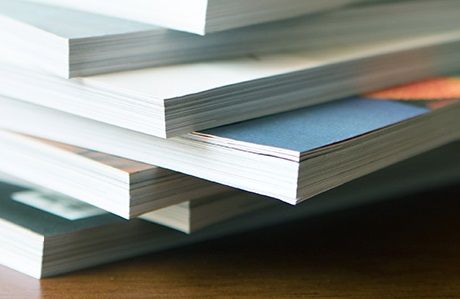
Looking for affordable Perfect Bound books made with PUR glue?
Color Vision has been producing affordable books for over
four decades. We offer a wide range of printing, binding, and finishing
services to make your book unique.
Even though PUR is a superior binding adhesive, Color Vision
does not charge extra for it. This means you get all the benefits of PUR binding
without paying a penny more.
So if you have an upcoming project, just fill out our simple Quote
Request form and we will be happy to send you a quote via email. Or, if
you prefer to discuss your project by phone, we can be reached
at 800-543-6299.
As always, we look forward to assisting with
your printing and binding needs!
Related Articles
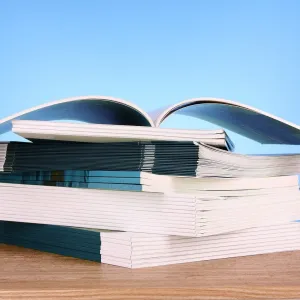
Printing Booklets: 5 Popular Types of Binding for Booklets
Read This Article
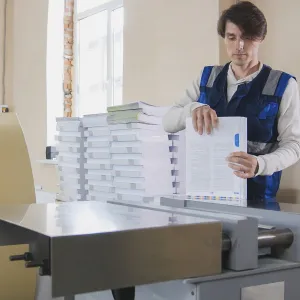
Short Run Book Printing: The Gateway to Self-Publishing
Read This Article
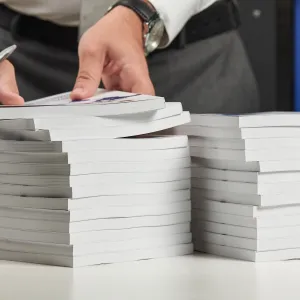
Perfect Bound Books: Exploring the Perfect Binding Process
Read This Article
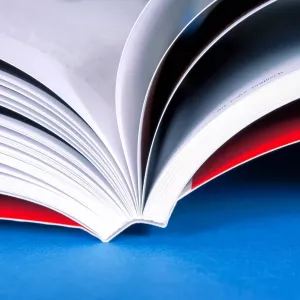
Custom Book Printing: What is PUR Binding?
Read This Article